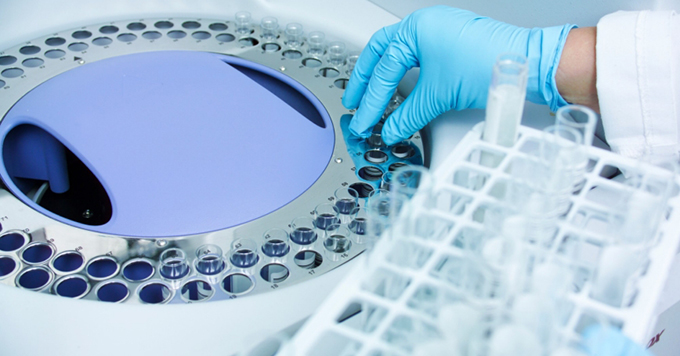
When I was awarded my PhD in medical research in 1991, going into business was not on my agenda.
My aim was to make discoveries that would contribute to a body of knowledge on human health. Put simply, I wanted to make people’s lives better. I regarded the academic research environment, full of smart, inquisitive people and state-of-the-art technology, as essential for me to achieve my aim. For me, this environment inspired the curiosity and inquiry that was integral to the highest quality medical research. In contrast, I thought any kind of enterprise outside of academia was on the “dark side”, driven by monopolies, sales, profits and an overwhelming need to control academic freedom.
I had been well and truly swept up by the righteous narratives of academic utopia.
Thankfully, all was not lost.
In 1998, I was leading a small team at the University of Adelaide. I was doing (and publishing research on high density lipoproteins (HDL) also known as “the good cholesterol”. I vividly remember the moment I looked down an electron microscope and saw tiny HDL particles that I had generated in an experiment. It was extremely satisfying. What was not so satisfying was the months of labour to get to that moment and, to be honest, I had not even begun to make the connection between those tiny HDLs and a human being (cf. my aforementioned aim!).
Enter my colleague Peter, to whom I shall remain forever grateful. Peter invited me to join the local chapter of my professional society – the Australian Society for Medical Research. It opened an ambitious possibility for me: to step away from doing experiments and step up to advocate for the entire medical research sector. It was transformational.
To cut a long story short, twenty years ago I moved from doing medical research into research management and strategy. This transition took a whole lot of help and even more patience.
Why did I do it? For me, it was about real people – the little boy in my Mum’s kindergarten class who was diagnosed with bone cancer, the relative diagnosed with motor neuron disease, and my Dad who had a form of dementia and was cared for by my Mum.
Was it the dark side? Far from it. My career move enabled me to bring my knowledge, experience, and passion to help world-leading medical researchers (who are way smarter than me) develop new cures, treatments, prevention, and diagnostics.
Back when I finished my PhD, academic research seemed like the obvious career choice. After all, that is what I had been trained to do. The “traditional” career path looked something like this: do a postdoc overseas, come back to Australia and set up your own research group, win grants and hopefully a fellowship, publish papers.
The reality for many is quite different with job security and funding success at an all-time low and many more PhD graduates than academic jobs available, even before the COVID-19 pandemic. A recent report entitled “Impact of the pandemic on Australia’s research workforce”, compiled by the Rapid Research Information Forum, confirms Australia’s research workforce will be severely impacted by the pandemic. The impacts on academic medical research across universities and medical research institutes will be long term (see this ABC article and this NHMRC post). Significantly reduced revenue, job losses, research placed on hold, limited access to collaborative teams, field or community-based work are just some of the impacts that have been reported.
The COVID-19 pandemic has shone a light on the value of health and medical researchers in so many areas. Academic epidemiologists have been widely called upon by government at all levels to assist with contact tracing, data analysis and data modelling (personal communication – WA, VIC and Tas). Infectious disease researchers have rapidly pivoted to the hunt for a vaccine or treatments for COVID-19 (updates from Telethon Kids and the Doherty Institute). Bioengineers have been re-purposed to manufacture face shields and other personal protective equipment. Medical equipment companies have redirected their energies and products to focus on the production of ventilators.
Do we need to re-think what a “research career” looks like?
In my view, the days of the “research hotel”, where a researcher checks in to an academic institution and continues to do research as long as they can secure competitive funding for them and their team, are numbered. There is a growing number of national cross-disciplinary research programs directed towards patient benefits [e.g. 1 / 2 / 3 / 4] and involving stakeholders across multiple sectors. These larger, “purpose-driven” initiatives have and should continue to attract significant funding and provide opportunities for highly skilled new graduates or early-mid career researchers.
Internationally, science and innovation have been proposed as the heart of strategies for long-term economic growth (for example, in the UK and Singapore). A 2019 report “Advancing Australia’s Knowledge Economy – who are the top PhD employers?”, shows that PhD graduates are increasingly finding jobs outside academia with the top business employers being finance, resources and energy and the medical and pharmaceutical industry.
Despite some perceptions that a PhD can be a liability to employment [e.g. 1 / 2 / 3], employers beyond academia cite problem-solving, self-management, adaptability, development and improvement of products, processes or services, specialist knowledge and skills as highly desirable characteristics of employees with a PhD. I know many researcher friends now in science communication and even some have been elected to government. Problem-solving curiosity-driven innovation is needed now more than ever.
Author Bio: Professor Moira Clay is one of Australia’s leading health and medical research strategists, based in Perth, Western Australia.